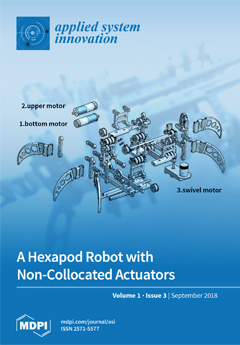With the advances in the microfabrication of analogue front-end devices, and embedded and signal processing technology, it has now become possible to devise miniaturized health monitoring kits for non-invasive real time monitoring at any location. The current commonly available kits only measure singleton
[...] Read more.
With the advances in the microfabrication of analogue front-end devices, and embedded and signal processing technology, it has now become possible to devise miniaturized health monitoring kits for non-invasive real time monitoring at any location. The current commonly available kits only measure singleton physiological parameters, and a composite analysis that covers all vital signs and trauma scores seems to be missing with these kits. The research aims at using vital signs and other physiological parameters to calculate trauma scores National Early Warning Score (NEWS), Revised Trauma Score (RTS), Trauma Score - Injury Severity Score (TRISS) and Prediction of survival (Ps), and to log the trauma event to electronic health records using standard coding schemes. The signal processing algorithms were implemented in MATLAB and could be ported to TI AM335x using MATLAB/Embedded Coder. Motion artefacts were removed using a level ‘5’ stationary wavelet transform and a ‘sym4’ wavelet, which yielded a signal-to-noise ratio of 27.83 dB. To demonstrate the operation of the device, an existing Physionet, MIMIC II Numerics dataset was used to calculate NEWS and RTS scores, and to generate the correlation and regression models for a clinical class of patients with respiratory failure and admitted to Intensive Care Unit (ICU). Parameters such as age, heart rate, Systolic Blood Pressure (SysBP), respiratory rate, and Oxygen Saturation (SpO2) as predictors to Ps, showed significant positive regressions of 93% at
p < 0.001. The NEWS and RTS scores showed no significant correlation (r = 0.25,
p < 0.001) amongst themselves; however, the NEWS and RTS together showed significant correlations with Ps (blunt) (r = 0.70,
p < 0.001). RTS and Ps (blunt) scores showed some correlations (r = 0.63,
p < 0.001), and the NEWS score showed significant correlation (r = 0.79,
p < 0.001) with Ps (blunt) scores. Global Positioning System (GPS) system was built into the kit to locate the individual and to calculate the shortest path to the nearest healthcare center using the Quantum Geographical Information System (QGIS) Network Analysis tool. The physiological parameters from the sensors, along with the calculated trauma scores, were encoded according to a standard Systematized Nomenclature of Medicine-Clinical Terms (SNOMED-CT) coding system, and the trauma information was logged to electronic health records using Fast Health Interoperability Resources (FHIR) servers. The FHIR servers provided interoperable web services to log the trauma event information in real time and to prepare for medical emergencies.
Full article





